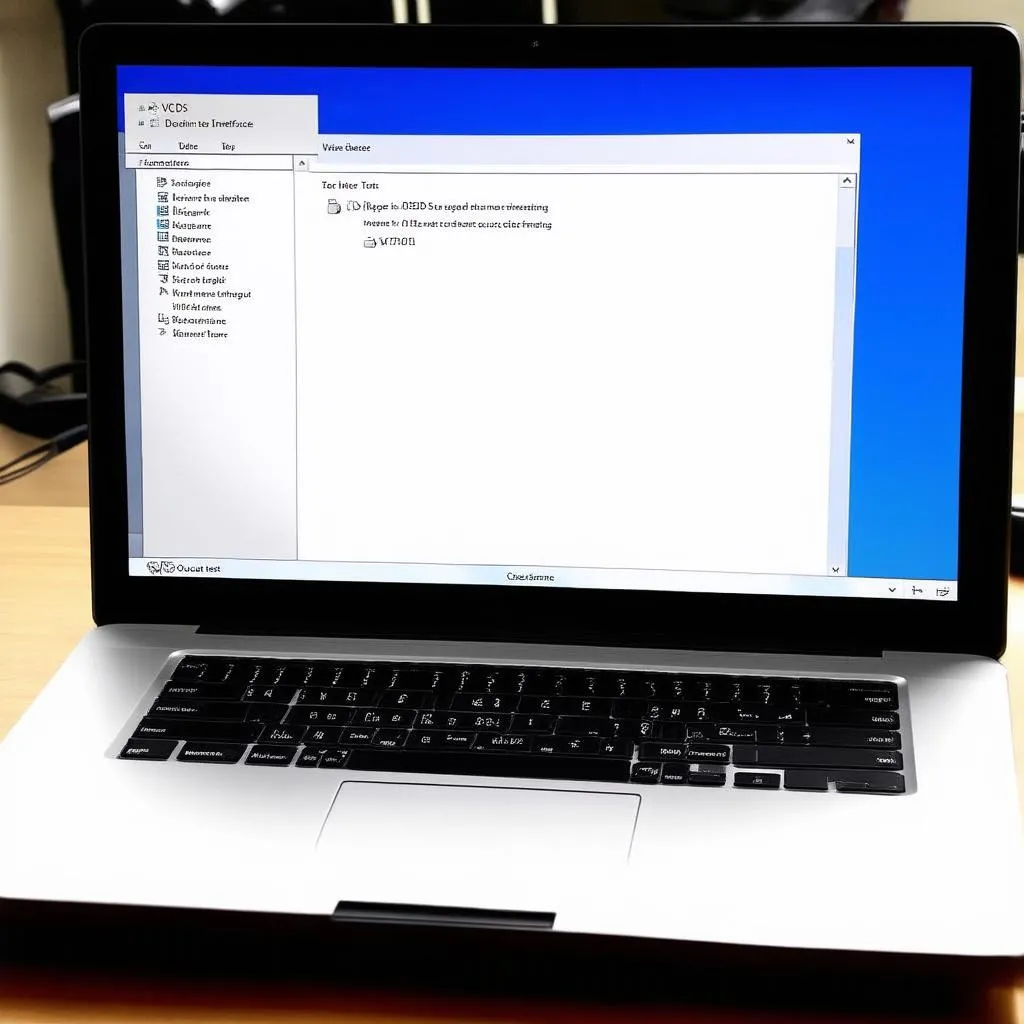As automotive technicians, we rely heavily on diagnostic tools to pinpoint and resolve electrical issues in vehicles. One powerful tool at our disposal is VCDS (Vag-Com Diagnostic System), especially when it comes to troubleshooting those tricky lighting problems. This article delves into the world of VCDS cold lamp diagnosis, exploring its capabilities and how it can streamline your diagnostic process.
What is VCDS Cold Lamp Diagnosis?
VCDS cold lamp diagnosis is a feature within the VCDS software that allows you to test individual lights and circuits in a vehicle without physically activating them. This is incredibly useful for identifying issues with bulbs, wiring, and control modules that might not be apparent during normal operation.
Imagine this: you’re facing a scenario where a headlight intermittently flickers or refuses to turn on. Traditional troubleshooting might lead you on a wild goose chase, replacing bulbs and checking fuses only to find the problem persists. VCDS cold lamp diagnosis provides a more targeted approach.
The Power of Precision with VCDS
By using VCDS, you can send commands directly to the vehicle’s electrical system, instructing it to activate specific lights without actually turning them on. This allows you to:
- Isolate faulty bulbs: Even if a bulb appears to be working, VCDS can detect subtle differences in resistance that might indicate an impending failure.
- Pinpoint wiring issues: By monitoring the current flow through individual circuits, you can identify shorts, opens, or high resistance areas that might be causing intermittent problems.
- Test control modules: VCDS lets you directly interact with the modules responsible for lighting functions, ensuring they are sending and receiving signals correctly.
How to Perform a Cold Lamp Diagnosis
Using VCDS for cold lamp diagnosis is relatively straightforward. Here’s a simplified breakdown:
- Connect your VCDS interface to the vehicle’s OBD-II port and launch the software.
- Select the appropriate control module for the lighting system you’re troubleshooting (e.g., Central Electrics, Body Control Module).
- Navigate to the “Output Tests” or “Actuator Tests” section within the module.
- You’ll be presented with a list of individual lights and circuits that you can test. Select the desired component and follow the on-screen prompts.
 VCDS Cold Lamp Diagnosis Screenshot
VCDS Cold Lamp Diagnosis Screenshot
Note: The exact steps and terminology may vary slightly depending on the specific vehicle model and VCDS software version you’re using. Always refer to the official VCDS documentation and your vehicle’s wiring diagrams for detailed instructions.
Benefits of Using VCDS for Cold Lamp Diagnosis
- Saves Time: Quickly identify the root cause of lighting problems, eliminating guesswork and unnecessary part replacements.
- Increased Accuracy: Go beyond visual inspections and traditional testing methods to get a more precise diagnosis.
- Reduced Frustration: Avoid the headaches associated with chasing intermittent electrical gremlins.
Common Questions about VCDS Cold Lamp Diagnosis
Q: Do I need any special equipment for cold lamp diagnosis?
A: Aside from your VCDS system, you won’t need any additional specialized equipment.
Q: Can I damage my vehicle’s electrical system by performing a cold lamp diagnosis?
A: Cold lamp diagnosis is a safe procedure when performed correctly. However, it’s essential to use a genuine VCDS interface and follow proper instructions to avoid any potential risks.
Q: Is VCDS cold lamp diagnosis only useful for exterior lighting problems?
A: No, you can use it to diagnose issues with interior lights, dashboard lights, and other electrical components controlled by the modules accessible through VCDS.
Enhance Your Diagnostic Arsenal with Cardiagtech
Investing in a reliable diagnostic tool like VCDS is essential for any automotive professional. Cardiagtech offers a wide range of high-quality diagnostic equipment to meet the needs of individual technicians and workshops.
For more information on VCDS and other diagnostic solutions, visit CARDIAGTECH or contact our team of experts for personalized assistance.
 Cardiagtech Website Homepage
Cardiagtech Website Homepage

